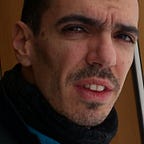8ms north of Athens
This is the time it takes light to cover the distance of 2387km, between Athens and Tallinn.
This is the time it took me to decide if I want to move to the “positively surprising” capital of Estonia when the opportunity arose.
During the first weeks in this country, despite the uncertainty that lack of income brings, plus a few minor adaptation challenges, I experience more and more the positive surprises in everyday life. In simple or more complicated things.
Being surrounded by the refreshing and colorful beauty of the Baltic autumn, that cools me down, after an extremely hot summer in Santorini, I feel calm, alive, and super curious to discover what’s next, in the wonderful journey of life.
As a Mediterranean expat, who is used to a certain mentality and culture, it took me some time to get familiar with how things work in this fast-growing and maturing, high-tech former Soviet Union republic.
In my very first encounter with the Estonian state, I experienced the reserved surprise of the elderly employee, when she saw my old fashioned, handwritten, and suspiciously worn out ID card. She admitted that it is the first time that she sees a handwritten official document but she acted very professionally, by accepting it, after my Estonian companion in life explained to her that that’s how IDs used to be in Greece, a few years ago.
To my surprise she didn’t even consider my physical presence necessary, to accept my application for obtaining a personal ID-code. Just a photocopy of my ID, brought by someone else, would have been enough.
I recognized trust in this behavior. A kind of trust that is not common in my country, where I would have to provide validated copies of my ID and of course to be present, to have any transaction with the public services.
Trust and openness are also present in other expressions of everyday life in Estonia. For example in the suburbs, not far from Tallinn center, it is common to see apples “free for you to take”, at a train station, or busy crossroads. Seeing unaccompanied school kids enjoying their time on playgrounds and skate parks, is as common as it is to witness as young as 7 years old kids riding trains, buses, and trams alone, to go to school every morning.
Estonian women, especially the younger generation, may not look open and warm at first sight but they seem to possess an esoteric warmth and calmness that is unique. They are simply beautiful, inside out, in their way, and usually without even being aware of it.
The more aged female population, which according to the statistics outnumbers the male one, carries a rare inner strength. Estonian women seem also to hide some kind of inner subtle sadness, even bitterness. Soviet-era adversities and the inevitable need for adaptation to a new harsh reality must have contributed to it.
Men seem to be somehow more absent from everyday life. I still don’t know how and why this is happening but it is way more common to see women and kids in the streets, than men. Maybe they are busy working hard. Maybe they are just less active in public life.
Just after a simple observation, you can realize that the Estonian kids are more confident, responsible, and independent than their peers in the Mediterranean countries. This can probably be an interesting explanation for the plethora of young talents in this country, especially in the fields of arts and innovative technology.
Kids that are raised as independent individuals — with absolute respect to their own will, unique character, and personal decisions and not as an extension of their parents — have the freedom to discover themselves and their talents faster and as a result to create more successfully the path of their own life, away from the collective consciousness or the parental ambitions.
The education system certainly plays a key role in it, since it is constantly evolving and generously supported by the local communities, who have introduced, during the last decade, an interesting variety of alternative private schools.
Innovative technology in everyday life is one more characteristic of this Hanseatic, Baltic, and Nordic European country. In 2005 Estonians became the first nation in the world who can vote online, with their electronic IDs, which also allow them to sign documents electronically and make secure payments and bank transactions. As a result, it seems that the monster of bureaucracy has been defeated in this country, something that contributes a lot to a successful business and hassle-free communications between the state and the citizens.
All the above mentioned may sound like a tourism advertisement for Estonia and can also be extremely biased, since “beauty is in the eye of the beholder”. Nevertheless, it is very difficult not to be touched by the almost mystic inner beauty of this country, especially after you have formed a strong bond with a unique Estonian soul.
In any case, the distance between Athens and Tallinn can be covered by light in just 8ms (or in 2h 20mins by plane) but the mentality and progress of Estonian people are at least a couple of light-years ahead of the Mediterranean one.
Athens is the cradle of democracy. I would say that Tallinn has become the birthplace of electronic democracy. Interestingly enough, Estonia was accepted into the European Union, in Athens in April 2003, at a ceremony that took place under Acropolis.
